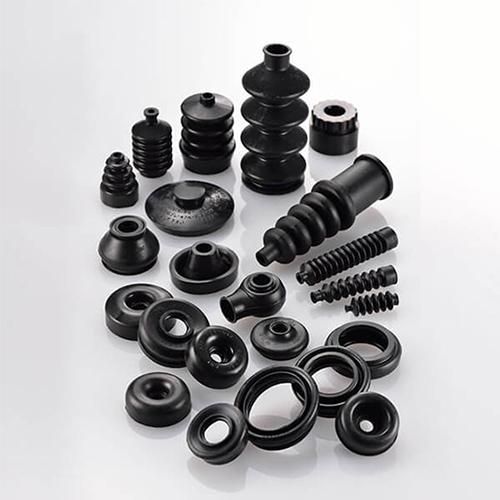 Introduction
Introduction
Molded rubber parts are an indispensable component in a wide array of industries, playing a crucial role in the functionality and performance of various products. From automotive and aerospace to consumer goods and industrial machinery, molded rubber parts offer versatility, durability, and resilience. In this article, we will delve into the world of molded rubber parts, exploring their applications, manufacturing process, and the myriad benefits they bring to different sectors.
Applications
Molded rubber parts find applications in diverse industries, serving a multitude of purposes. In the automotive sector, they are used in gaskets, seals, hoses, and vibration isolators. These components are essential for maintaining the integrity of automotive systems, ensuring proper sealing and reducing noise, vibration, and harshness (NVH) levels.
In the aerospace industry, molded rubber parts are utilized in critical applications such as aircraft seals, grommets, and vibration dampeners. Their ability to withstand extreme temperatures, pressure differentials, and environmental conditions makes them indispensable for ensuring the safety and reliability of aerospace systems.
Furthermore, molded rubber parts are prevalent in the manufacturing of industrial machinery, where they contribute to the efficiency and longevity of equipment. They are utilized in hydraulic and pneumatic systems, as well as in the production of custom-molded components tailored to specific industrial requirements.
Manufacturing Process
The manufacturing of molded rubber parts involves a meticulous process that begins with the selection of the appropriate rubber compound. This compound is then placed into a mold cavity, which is subjected to heat and pressure to facilitate vulcanization, the process that transforms the rubber into its final form. The use of precision molds ensures that the finished parts meet exacting dimensional and performance specifications.
The molding process can take various forms, including compression molding, transfer molding, and injection molding, each offering distinct advantages depending on the complexity of the part and the desired properties of the finished product.
Benefits
The inherent properties of rubber, combined with the flexibility of the molding process, result in a host of benefits associated with molded rubber parts. These include:
- Resilience and Durability: Rubber parts exhibit excellent resilience, allowing them to withstand repeated deformation and recover their original shape. This resilience contributes to the durability of the parts, making them suitable for long-term use in demanding environments.
- Sealing and Insulation: The inherent flexibility and compressibility of rubber make it an ideal material for sealing applications, effectively preventing the leakage of fluids and gases. Additionally, rubber provides excellent electrical insulation, making it valuable in electronic and electrical components.
- Chemical and Weather Resistance: Many rubber compounds offer exceptional resistance to chemicals, oils, and UV radiation, allowing molded rubber parts to maintain their integrity in harsh operating conditions.
- Vibration and Shock Absorption: Rubber’s ability to dampen vibrations and absorb shocks makes it invaluable in applications where noise reduction and equipment protection are paramount.
Conclusion
Molded rubber parts represent a cornerstone of modern manufacturing, offering a combination of resilience, versatility, and performance that is essential across a spectrum of industries. From enhancing the safety and reliability of aerospace systems to improving the efficiency of industrial machinery, these components continue to play a pivotal role in advancing technological innovation and product development. As industries evolve, the demand for custom-molded rubber parts tailored to specific requirements is expected to grow, further underscoring the significance of this versatile material in the global manufacturing landscape.
Level 3 PPAP Documentation
A PPAP is a standardized format to communicate and document part specification and approval requirements. It helps determine if the manufacturing process is capable of consistently producing parts that meet the required specifications in a production setting.
Specific PPAP requirements are described in more detail in the Automotive Industry Action Group (AIAG) Production Part Approval Process, PPAP Guide. Below is a summary of our standard Level 3 PPAP submission. PPAP’s can be tailored to fit specific customer requirements.
PPAP activities generally include documentation including:
- Design Record (Generally Part Print)
- Process Flow Diagram
- Process Failure Mode and Effects Analysis
- Control Plan
- Gage R&R
- Dimensional report
- Material Certification
- Capability Analysis
- ISO 9001 Certificate
- Sample Parts
- Part Submission Warrant
